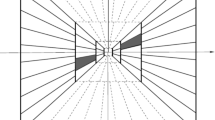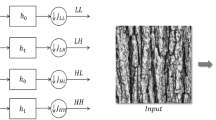Abstract
This paper presents the GLCM based texture feature extraction for all the bands of Hyper Spectral Images (HSIs) and then Correlation Coefficient (CC) is estimated. Based on the CC, the threshold is computed and the bands are segregated into high correlation bands and low correlation bands. The bands with high correlation is compressed using the residual band information technique. Subsequently, the Singular Value Decomposition (SVD) and Principal Component Analysis (PCA) approaches are employed for compressing the low correlation bands. An efficient HSI compression approach is introduced based on Discrete Wavelet Transform (DWT) for the initial band of HSI. This exploits the information of both spectral and spatial in the images. Accordingly, the compressed output is decoded and reconstructed. A novel hybridization of the Fuzzy C-Means (FCM) and Subtractive Clustering (SC) is proposed to cluster the reconstructed images. Therefore, the FCM provides the optimum results, whereas the SC finds the accurate number of clusters. The experimental results exhibit the better performance of memory consumption, MSE, PSNR, and compression ratio than the existing methods.
Similar content being viewed by others
References
A. Kaur and J. Kaur, “Comparison of DCT and DWT of Image Compression Techniques,” Int. J. Eng. Res. Dev. 1(4), 49–52 (2012).
X. Pan, et al., “Low-complexity compression method for hyperspectral images based on distributed source coding,” Geoscience and Remote Sensing Letters, IEEE Trans. Geosci. Remote Sens. 9, 224–227 (2012).
K.-j. Cheng and J. Dill, “Lossless to Lossy Dual-Tree BEZW Compression for Hyperspectral Images,” IEEE Trans. Geosci. Remote Sens. 52, 5765 (2014).
A. Karami, et al., “Compression of hyperspectral images using discerete wavelet transform and tucker decomposition,” IEEE J. Selected Topics App. Earth Observ. Remote Sens. 5, 444–450 (2012).
M. Zimba and S. Xingming, “DWT-PCA (EVD) based copy-move image forgery detection,” Int. J. Digital Content Techn. Appl. 5, 251–258 (2011).
Z. Ji, et al., “Fuzzy c-means clustering with weighted image patch for image segmentation,” Appl. Soft Comput. 12, 1659–1667 (2012).
A. P. Nilawar, “Image Retrieval Using BTC with GLCM,” Int. J. Adv. Res. Comput. Sci. Software Eng. 3, 1194–1197 (2013).
H. Kekre, et al., “Image Retrieval using Texture Features extracted from GLCM, LBG and KPE,” Int. J. Comput. Theory Eng. 2, 1793–8201 (2010).
J. Mielikainen and B. Huang, “Lossless compression of hyperspectral images using clustered linear prediction with adaptive prediction length,” IEEE Trans. Geosci. Remote Sens. Lett. 9, 1118–1121 (2012).
A. Karami, et al., “Hyperspectral image compression based on tucker decomposition and wavelet transform,” in Proc. 3rd Workshop Hyperspectral Image and Signal Processing: Evolution in Remote Sensing (WHIS-PERS), 2011, pp. 1–4.
G. Bilgin, et al., “Segmentation of hyperspectral images via subtractive clustering and cluster validation using one-class support vector machines,” IEEE Trans. Geosci. Remote Sens. 49, 2936–2944 (2011).
H. Cao, et al., “Segmentation of M-FISH images for improved classification of chromosomes with an adaptive Fuzzy C-Means Clustering Algorithm,” IEEE Trans. Fuzzy Syst. 20, 1–8 (2012).
B. Mirzaei, et al., “An effective codebook initialization technique for LBG algorithm using subtractive clustering,” in Proc. Iranian Conf. Intelligent Systems (ICIS), 2014 (IEEE, New York, 2014), pp. 1–5.
G. Chen and S.-E. Qian, “Denoising of hyperspectral imagery using principal component analysis and wavelet shrinkage,” IEEE Trans. Geosci. Remote Sens. 49, 973–980 (2011).
J. Song, et al., “Lossless compression of hyperspectral imagery via RLS filter,” Electron. Letters 49(16), (2013).
F. García-Vílchez, et al., “On the impact of lossy compression on hyperspectral image classification and unmixing,” IEEE Trans. Geosci. Remote Sens. Lett. 8, 253–257 (2011).
J. Li, et al., “Spectral-spatial hyperspectral image segmentation using subspace multinomial logistic regression and Markov random fields,” IEEE Trans. Geosci. Remote Sens. 50, 809–823 (2012).
J. S. Borges, et al., “Bayesian hyperspectral image segmentation with discriminative class learning,” IEEE Trans. Geosci. Remote Sens. 49, 2151–2164 (2011).
L. Zhang, et al., “Tensor discriminative locality alignment for hyperspectral image spectral-spatial feature extraction,” IEEE Trans. Geosci. Remote Sens. 51, 242–256 (2013).
J. Li, et al., “Hyperspectral image segmentation using a new Bayesian approach with active learning,” IEEE Trans. Geosci. Remote Sens. 49, 3947–3960 (2011).
L. Jiao, et al., “Shape-adaptive reversible integer lapped transform for lossy-to-lossless ROI coding of remote sensing two-dimensional images,” IEEE Trans. Geosci. Remote Sens. Lett. 8, 326–330 (2011).
S. Kala and S. Vasuki, Hyperspectral Image Compression Based on DWT and TD with ALS Method (2013). Yet to be published.
A. M. De Silva, et al., “Exploring the implementation of JPEG compression on FPGA,” in Proc. 6th Int. Conf. Signal Processing and Communication Systems (ICSPCS), Gold Coast, Australia, Dec. 12–14, 2012 (IEEE, New York, 2012), pp. 1–9.
L. Wang and Y. Feng, “Hyperspectral Imaging via Three-dimensional Compressed Sampling,” in Proc. Int. Conf. Advanced Computer Science and Electronics Information (ICACSEI 2013), Beijing, China, July 25–26, 2013.
S. Kala and S. Vasuki, “FPGA Based Hyperspectral Image Compression Using DWT and DCT,” Australian J. Basic Appl. Sci. 8(7), (2014).
H. Wang, et al., “Lossless hyperspectral-image compression using context-based conditional average,” IEEE Trans. Geosci. Remote Sens. 45, 4187–4193 (2007).
Z. Renyan, et al., “A VLSI design of sensor node for wireless image sensor network,” in Proc. IEEE Int. Symp. Circuits and Systems (ISCAS), 2010 (IEEE, New York, 2010), pp. 149–152.
K. Horvath, et al., “Lossless Compression of Polar Iris Image Data,” in Pattern Recognition and Image Analysis, Vol. 6669, Ed. by J. Vitrià, et al. (Springer, Berlin, 2011), pp. 329–337.
Q. Cai, et al., “Lossy and lossless intra coding performance evaluation: HEVC, H. 264/AVC, JPEG 2000 and JPEG LS,” in Signal & Information Processing Association Annual Summit and Conference (APSIPA ASC), 2012 (Asia-Pacific, 2012), pp. 1–9.
Author information
Authors and Affiliations
Corresponding author
Additional information
The article is published in the original.
Rights and permissions
About this article
Cite this article
Kala, S., Vasuki, S. Feature correlation based parallel hyper spectral image compression using a hybridization of FCM and subtractive clustering. J. Commun. Technol. Electron. 59, 1378–1389 (2014). https://doi.org/10.1134/S1064226914120195
Received:
Published:
Issue Date:
DOI: https://doi.org/10.1134/S1064226914120195




